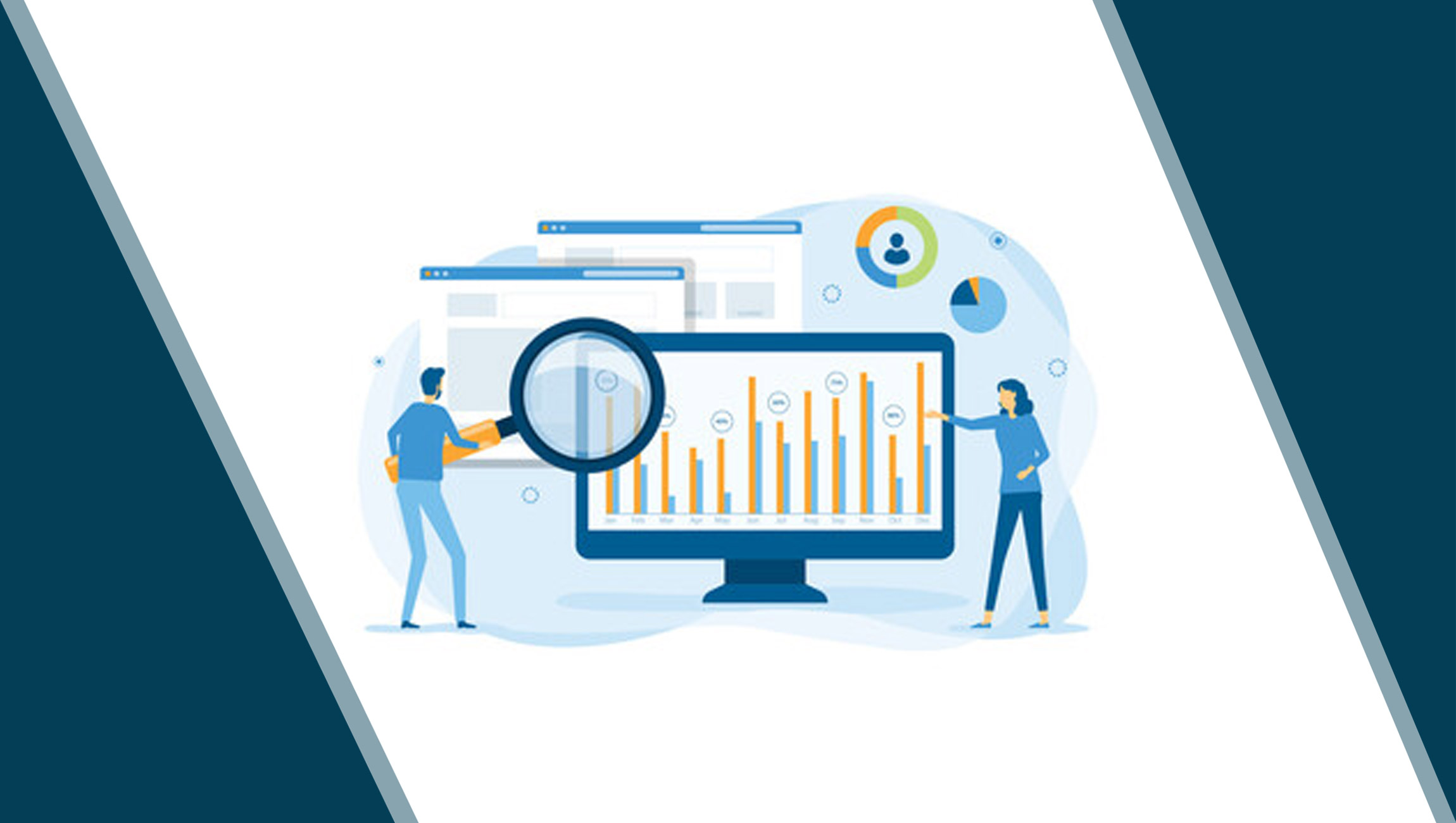Ed Locher, Vice President of Marketing at HG Insights chats about the evolving use of data in marketing and what today’s marketers need to keep in mind when driving strategies with different datasets:
__________
Welcome to this MarTech Series chat Ed, tell us about your marketing journey through the years and what inspires you about marketing today? We’d love to hear more about being VP Marketing at HG Insights…
It’s an exciting time in marketing…the field has evolved more in the past five years than in the previous 15 and the pace of change is still accelerating.
Throughout my marketing journey, I’ve observed that it’s disingenuous to think B2B marketing can ignore the emotional component. Successful marketing appeals to the individual, on an emotional level. No company ever bought anything. People do. And just as every individual is different, marketing is different from all other disciplines. It’s subjective in ways that finance, accounting, legal, and even sales, are not. It’s challenging, but it’s a problem we’re able to solve better today than ever before.
Marketing Technology News: HG Insights Acquires Intricately
Today, data is the backbone of all marketing. Data shows you where to focus your effort, where your opportunity is greatest, where competition is weak, and where you have the best chance of converting prospects by highlighting those concerns or challenges that individuals are experiencing. In short, addressing pain. Data has allowed us to address some of the key challenges for sales and marketing alike. It also uncovers how marketing can align and integrate with sales, rev gen, demand gen, and Go-To-Market motions. How to optimize your resources to maximize your ROI, and how to prove it’s all working toward your business’ growth goals.
Marketing leaders have changed how marketing creates value, how its value is understood, and how it translates into growth. Marketing, like all of the other disciplines, now has the ability to be transparent, predictable, and accountable.
What are some of the base level challenges you still see a lot of marketing leaders and executives still struggle with in today’s market?
In my 20+ years in marketing, a challenge I’ve consistently seen is the desire to keep up with the rapidly evolving industry and changing markets, but an inability to do so. Today, marketing is:
Using data to…
- Segment audiences and target accounts
- Optimize all sales and marketing motions
- Report on the efficacy of strategies and campaigns
Cultivating departmental alignment, from strategy and product to sales and marketing
- Educating customers on their need to use data, and how
- Embracing predictability, transparency, and accountability
Many marketing leaders are slow to adapt to the new data-driven ecosystem. But there are real benefits from using data-driven insights to make decisions and drive sales, marketing, or GTM actions.
But distilling insights from this data is not enough. The real benefits come from operationalizing this data—using your data-driven insights to make better decisions and drive action. Insights make companies more efficient, productive, and predict future market trends. So, marketers need to find a way to bring disparate sources of data together in a structured format to optimize specific sales and marketing use cases.
As someone with a long marketing history behind them, how have you seen key trends evolve and what basics do you feel should and will always stay in B2B marketing, aspects that marketers should keep as core fundamentals throughout?
Until the early 2000s, marketing was a one-way conversation. Campaigns took months to put together and were broadcasted with a forceful, one-size-fits-all approach. The only way to predict success was gut feeling—all we could do was say, “Trust me, this is going to be big.
Fast forward to the 2010s, we came into marketing practices that look familiar today. The emergence of genuine campaign customization on an account-based level—ABM—allowed us to build frictionless B2B buying journeys similar to the B2C experience. Campaign creation, monitoring, and refining was no longer a roll of the dice thanks to the use of data, the ability to measure reliably and accurately, and to leverage the insights drawn from it.
What is still important today, maybe even more so in the past, is the ability to connect on an emotional level with your buyer(s). This was historically missing from B2B marketing. As enterprise-level buying becomes more complex, you need to make a case for how your solution will be useful to the entire buying committee, for the entire business—how it can solve problems for every decision maker. You need to address all of these buyers as individuals in order to get a signature.
Marketing Technology News: HG Insights Launches Functional Area Intelligence, Delivering the First Actionable Insights to…
We’d love to hear a little about your core marketing processes at HG Insights and the tools you use to help drive those initiatives. Tools besides HG Insights of course!
From a high-level perspective, our core processes are in place to create a predictable, accountable, and transparent machine that delivers revenue. To do this, I use data… and that’s not just because I work at a data science company. My methodology is “test and invest”—when something works, I double down with the rest of the budget.
I use first-party data from inbound efforts, content marketing, webinars, advertising, and visitors signing up for free offers and demos. I also use data from outside sources—third party sources and bidstream data, for example—that’s scored for precision, signal strength, and accuracy. Our scoring model has a 90%+ precision rate.
As a team, we use data to establish a holistic picture of an account. In contrast to conventional targeting, we use a model called “F.I.I.T.,” which identifies a prospect’s likelihood to buy based on the overlap of 3 categories: firmographic data, install data, and buyer intent data (with context) to determine whether that account is a target, or “F.I.I.T.,” for our solution. Focusing on accounts that are a “FIIT” for our product allows us:
- More efficient resource allocation
- Cross/upselling opportunities
- Increased conversions
What are some of the top skills that you feel every marketer today needs to imbibe more to thrive in the market and in a marketing journey, to rise to a C level or VP level?
Adaptability is key. No matter what you learn in school, marketing is different at each organization, so there’s always a learning curve.
Effective reporting is table stakes. With accurate data and incisive and actionable insights informing your strategy, you position your department for growth.
Curiosity and determination, on a personal level. You can train anyone to use a tool, but if you aren’t intellectually curious about how or why we’re using it you won’t evolve over time. And you need determined team members to figure out why something isn’t working and how to fix it.
We’d love to hear a few predictions you have in mind for the future of martech and B2B marketing!
Data will continue to dominate marketing moving forward because of the unmatched optimization abilities. This means that the demand for timely, granular data—in order to gain a competitive advantage and to make sense of the ever-changing end-user environments—is growing exponentially.
But there’s the catch: each organization needs to find out how to make data operational.
Tighter alignment with sales and revenue and demand generation efforts is on the horizon. Overall, I see important aspects of marketing moving quantitative, which is integral to the “testing and investing” process. And, to follow suit, we’re going to see more ROI-centric leadership.
Some last thoughts, takeaways, before we wrap up!
At HG, we are fortunate to work with data analytics leaders of technology vendors, understanding their challenges and formulating best practice solutions together. They trust our input on their processes, challenges, and solutions so that they can execute successful Go-To-Market strategies. They trust HG because of our data. With quality data, you can get them to trust you too.
Marketing Technology News: Marketing Technology Highlights of The Week: Featuring DatChat, Tatari, Freewheel, HG Insights and…

HG Insights is a global leader in technology intelligence. Every day, HG Insights uses advanced data science methodologies to process billions of unstructured digital documents to produce the world’s best technology installation information, IT spend, and contract intelligence.
Ed Locher is Vice President – Marketing at HG Insights. Ed Locher is a global B2B marketing executive with over 20 years of experience helping public, private, and PE-backed organizations create value through revenue acceleration and organizational optimization.
Combining his experience in technology and process improvement with visionary leadership, he has led the transformation of marketing teams from good to great and has helped establish marketing as a competitive differentiator.
At HG Insights, Ed is responsible for strategy, tactics, and programs designed to create interest, demand, revenue, and recognition for HG Insights.
Missed The Latest Episode of The SalesStar Podcast? Have a quick listen here!
Episode 123: B2B Revenue Tricks And Best Practices with Jamie Bertasi – President and Chief Operating Officer at Totango
Episode 122: Building The Connected Enterprise for Modern Sales: with Mike Smith, Senior Director, Enterprise Sales, CData Software
Episode 121: Sales Enablement Trends for 2022: with Carson Conant, Founder and CEO at MediaFly











